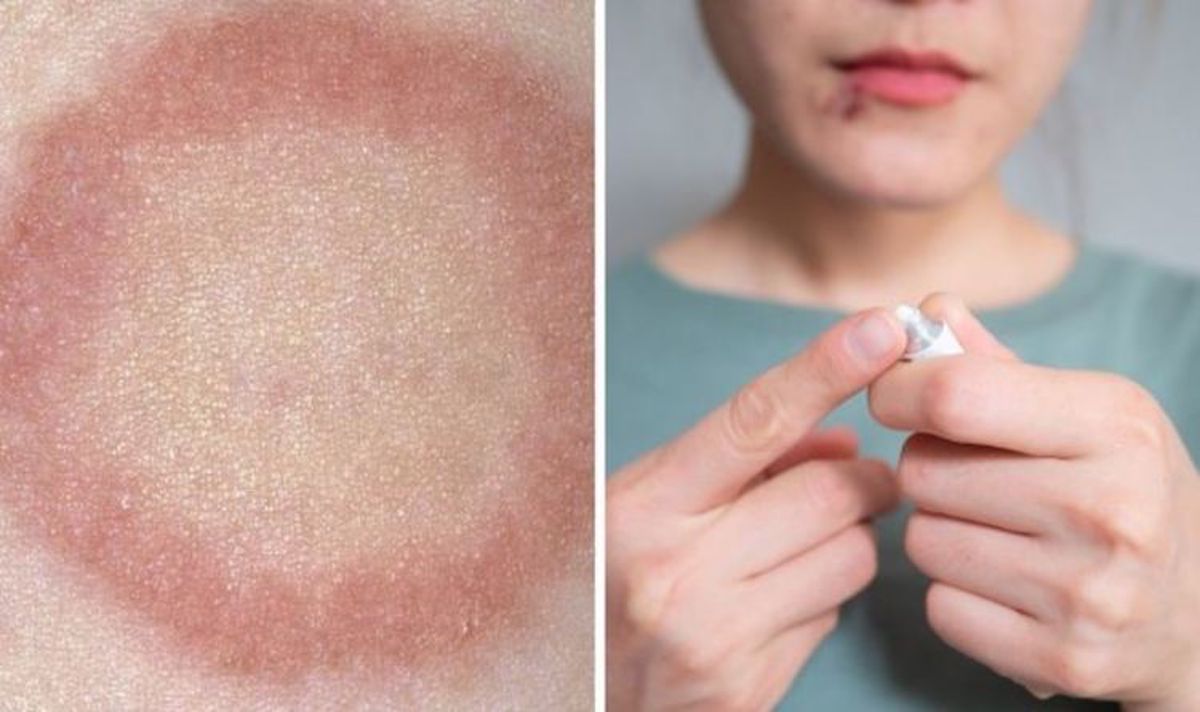Usually, this type of fungus lives in your skin, nails, and hair. When the fungus environment gets just the way he likes it, it starts to grow uncontrollably and the infection/ringworm appears, and (if possible) spreads to other parts of the body of other people and/or animals. Perfect conditions for ringworm include warm and humid climates. Other factors that increase the chance of getting ringworm are having a weakened immune system or an autoimmune disease, like lupus, playing high-contact sports, sweating excessively, using public locker rooms and/or showers, and working with animals that might have ringworm.

Symptoms of Ringworm
On the previous page, we have already explained what a typical ringworm – on the arm, leg or torso, or face – looks like. Should your rash look like this, you can guess what you are suffering from, but it has several other symptoms and not all types of fungal infections look the same. Symptoms often appear between 4 and 14 days after getting infected with the fungus that causes ringworm. Symptoms of a fungal infection include:
- Itchy skin
- Red skin
- Scaly and/or cracked skin
- Flat patches with a raised and round border
- Hair loss or bald spots on the affected area
- Pain on the affected area – especially with scalp ringworm
- Ring-shaped rash
Are There Any Treatment Options
In case you recognize these symptoms in yourself or a loved one, make sure you – or that loved one – visit a professional healthcare provider to receive the right diagnosis, before treating it. The healthcare provider will take a closer look at your rash & ask some necessary questions, and eventually, make his diagnosis. When in doubt the provider will test the rash by doing a small skin scraping and examining this. Once the right diagnosis is made, the following treatment options are possible to stop the fungus from spreading:
- Non-prescription antifungal medication, like creams, lotions, or powders
- Prescribed antifungal medication
There are so many types of skin disorders, in case you want more information… Check it out here. It’s important to seek medical treatment when you suffer – or think you suffer – from a skin disorder, problem, or infection. Your healthcare provider will look at you, examine your symptoms, make the right diagnosis, and start an effective treatment plan. That’s why it’s good to do your online research first. We are here to help you, so start your search here:

